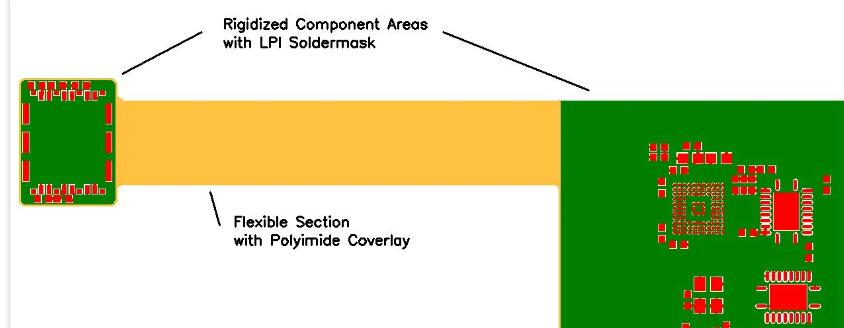Coverlay PCB can be used as a solder mask for flexible printed circuit boards. Traditional solder covers only have limited flexibility, so for flexible circuits that require greater flexibility, the cover layer adheres to protect the copper structure.

Flexible PCB overlay is a solid material composed of two parts, including a layer of acrylic or epoxy-based flexible adhesive and a layer of polyimide. The adhesive binds polyimide to the flexible circuit and seals the circuit. Then, the flexible PCB coverlay is aligned with the circuit surface and aligned at a specific temperature and pressure.
The flexible PCB coverlay is a layer that protects the circuit board and copper foil. It has the same function as a solder mask but increases flexibility. Its thickness is usually one mil thick, but different thicknesses can meet the exact design requirements. They are laminated with heat and force.
The main function of the Flex overlay PCB board is to protect the circuits on the flexible PCB board. It serves as a flexible printed circuit board for solder masks or solder film. Traditional solder mask or solder mask has limited ductility or flexibility. For flexible printed circuits that require greater flexibility, stick a flexible PCB coverlay on the circuit board to protect copper foil and wires. Flexible PCB overlay is commonly used in the PCB industry and is also the preferred solution for external circuit packaging layers of flexible printed circuits. It provides a more durable and powerful solution with excellent flexibility and high dielectric strength.
What Is The Difference Between Flexible PCB Coverlay And Solder Mask Layer?
The exposed layer of flexible PCBs can be encapsulated with a polyimide coverlay, flexible solder mask or solder mask film. Although the main function of both materials is to protect or insulate the outer circuit of flexible PCBs, each material has different characteristics, capabilities, and characteristics that are suitable for certain specific design requirements.
1) The flexible PCB coverlay is a combination of adhesive and Capton (a polyimide), but the solder mask is based on liquid.
2) Flexible solder mask uses photographic imaging liquids attached to PCBs. Because it is flexible, it allows for larger feature openings. Flexible solder mask is also cheaper than polyimide coatings based on thin films. Flexible PCB covers are more versatile than rigid PCBs and provide the same functionality as rigid PCBs.
3) The coverlay is generally used for the flexible part of flexible PCBs. A soldering mask is used on the hard or rigid parts of a PCB. However, if you want to use a coverlay on the entire rigid flexible PCB, please ensure that the square or window openings exist.
4) Unlike a solver mask, overlay cannot be used on pitch components.
In the manufacturing process of flexible PCBs, a flexible PCB protective layer is used to encapsulate and protect the copper structure (external circuits and wiring) of the flexible PCB. It is a covering film composed of a thick layer of acrylic or polyimide sheets and a flexible adhesive layer, which is laminated at high temperatures and then pressurized onto the surface of the circuit. The main function of the flexible PCB coverlay is to protect the base of the flexible printed circuit material. It has high-temperature resistance and can be used for heaters and ovens.